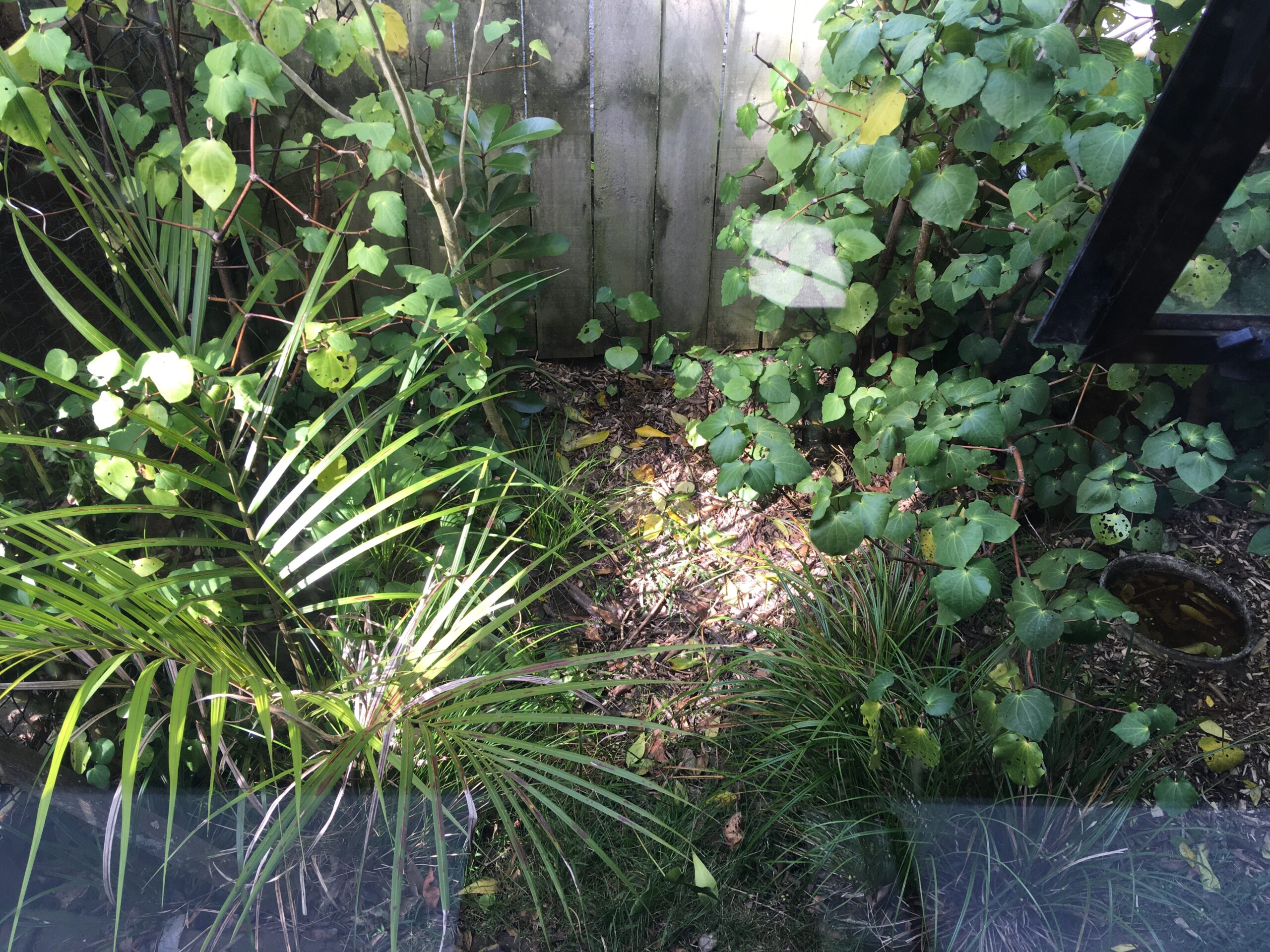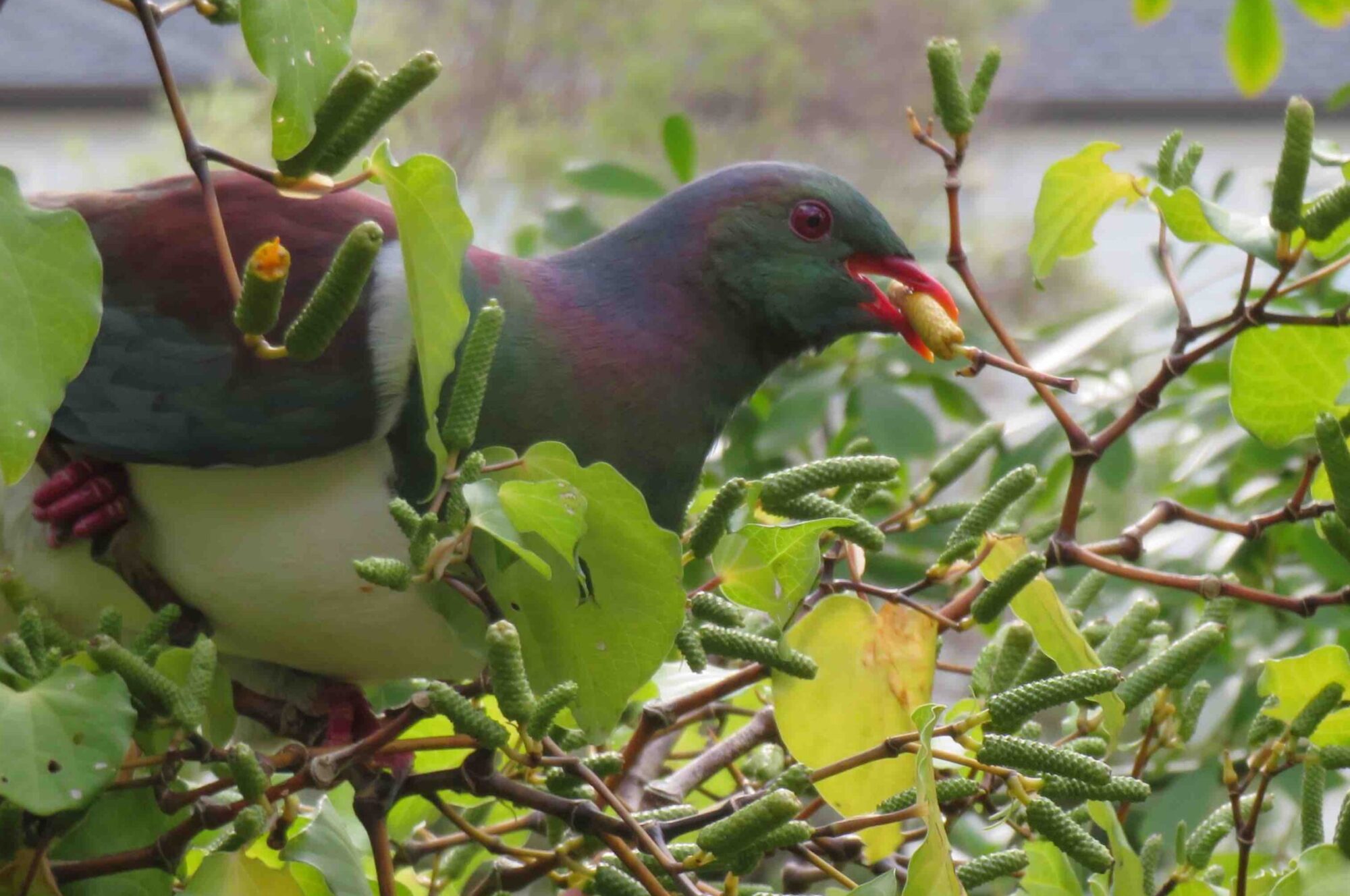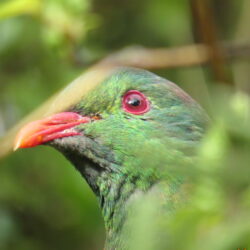Chemical-free weed control for two of our major garden restorations has now been completed and those projects now only need monthly maintenance. This means we will have 8-10 hours a week free for an intensive start to one or two new garden restoration projects where some rapid transformation is needed in addition to the longer term transition to a low-maintenance outdoor environment.
Learn more about our garden services, what to expect, and how we do it.
Below: the narrow space between house and fence (1.5m including a paving block path, out of view in the foreground) has been transformed from kikuyu, bare clay and weed trees to native shrubs and trees that need only annual pruning to maintain access along the path directly beneath the windows, from where the residents can watch kereru, tui and songthrushes eating kawakawa fruit in summer.
Foreground left is a nikau, about 10 years old and a metre high. Each year for the next 20 years, one of its 2 or 3 new leaves a year will grow towards the house, obstructing the path, but in this seldom-used area it can be pushed aside, or if necessary tied back or even cut off.
Much later, it will present only a single trunk, and each year two or three of the leaves, canopying the path and surrounding garden from above, will fall to the ground and be carried down the back to add to the natural environment (and invertebrate habitat) under larger trees.
There’s nothing more splendid to watch from your kitchen table than a kereru feasting on nikau fruit an arm’s length away, but if the big leaves are not for you you could skip the nikau and just have karamu, kawakawa and smaller shrubs and groundcovers, such as the sedges (Carex lambertiana) shown here. A couple of seedlings planted here have multiplied themselves by both seed and division, and will continue to spread until they cover the ground without further intervention.


